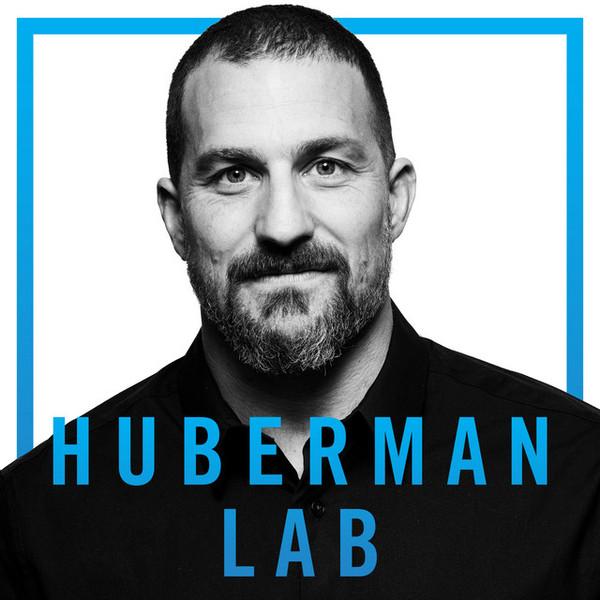How to Learn Faster by Using Failures, Movement & Balance — Episode #7
Curated from: Huberman Lab
Ideas, facts & insights covering these topics:
7 ideas
·3.23K reads
16
Explore the World's Best Ideas
Join today and uncover 100+ curated journeys from 50+ topics. Unlock access to our mobile app with extensive features.
Arriving at Optimal Arousal
- “Limbic friction” refers to states where we are either over- or under-aroused for a task. We can adjust arousal up or down using respiration, vision, movement, etc.
- The ideal state for learning is clear, calm and focused. Slight anxiety or fatigue is okay, but avoid extremes.
- Tools to decrease arousal: double inhale/exhale, panoramic vision. Tools to increase arousal: faster breathing, physical movement.
41
584 reads
Making Errors
- Errors signal the brain that a change is needed and release chemicals necessary for plasticity like epinephrine, acetylcholine, and dopamine.
- Errors should be made for 7–30 minutes per learning bout to be effective. Shorter, intense bursts are best for adults due to limits in sustained attention.
- Errors should focus on one component at a time. The brain can only change so much, so keep errors targeted.
- Associate errors subjectively with reward by reframing frustration as a signal of effective learning. This amplifies their impact.
35
497 reads
Using the Vestibular System
- The vestibular system controls balance and orientation. Novel challenges to balance release dopamine, epinephrine and acetylcholine, priming the brain for change.
- Doing familiar motor activities like yoga or surfing will not activate plasticity mechanisms in the brain. The key is finding activities that disrupt your normal relationship with gravity in new ways.
- Activities that incorporate instability or falling (within reason) create the strongest signal for change. But avoid danger.
35
459 reads
High Contingency or Importance
- The brain will maximize plasticity and learning when there is a strong need or motivation to learn. Our survival instincts drive changes that keep us safe.
- Attach importance to your learning by linking it to meaningful goals or outcomes. The brain does not distinguish between real or imagined contingencies, so use mental visualization and framing.
35
438 reads
Considerations
- Mechanism determines applicability. Understanding why certain methods work allows flexibility in applying them as needed. Rigid attachment to protocols alone is limited.
- While errors trigger plasticity, the brain still has capacity limits. Pushing beyond frustration will not accelerate learning and may be counterproductive. Find the “sweet spot” for your needs.
- The subjective nature of experience means the same methods may differ in impact between individuals. Analyze what works for your own mind and body.
32
417 reads
How to Learn Faster by Using Failures, Movement & Balance — Key Takeaways, Part 1/2
- Arrive at learning with appropriate arousal for the task by using tools to shift your autonomic state up or down as needed.
- Focus learning bouts around making repetitive errors for short periods, 7–30 minutes for most adults. Break learning into smaller increments.
- When learning feels frustrating, reframe it as effective and rewarding to activate dopamine. Shift your perception and experience.
- Engage your vestibular system through safe practices that move your body in new dimensions relative to gravity. Find activities that feel novel or challenging for you.
35
410 reads
How to Learn Faster by Using Failures, Movement & Balance — Key Takeaways, Part 2/2
- Link your learning goals to meaningful outcomes to maximize motivation and accelerate change. Our mindset and framing influences our reality.
- Understand the mechanisms behind the methods, so you can apply them flexibly. Question rigid attachment to any one approach.
- Supplement practices with rest, nutrition, movement and social connection. Take a balanced, multifaceted approach to shaping yourself.
33
427 reads
IDEAS CURATED BY
I share the best ideas from books, podcasts, and daily discoveries. Join me in learning something new every day.
CURATOR'S NOTE
The podcast provides an overview of neuroplasticity, how we can reshape our neural circuitry through targeted and deliberate practice by focusing our attention, making errors and accessing optimal mind-body states. Discussion centered around four behaviors that optimize neuroplasticity in adults: arriving at an optimal level of arousal, making many errors, utilizing the vestibular system, and attaching high importance or contingency to learning.
“
Similar ideas
5 ideas
7 ideas
17 ideas
Read & Learn
20x Faster
without
deepstash
with
deepstash
with
deepstash
Personalized microlearning
—
100+ Learning Journeys
—
Access to 200,000+ ideas
—
Access to the mobile app
—
Unlimited idea saving
—
—
Unlimited history
—
—
Unlimited listening to ideas
—
—
Downloading & offline access
—
—
Supercharge your mind with one idea per day
Enter your email and spend 1 minute every day to learn something new.
I agree to receive email updates

